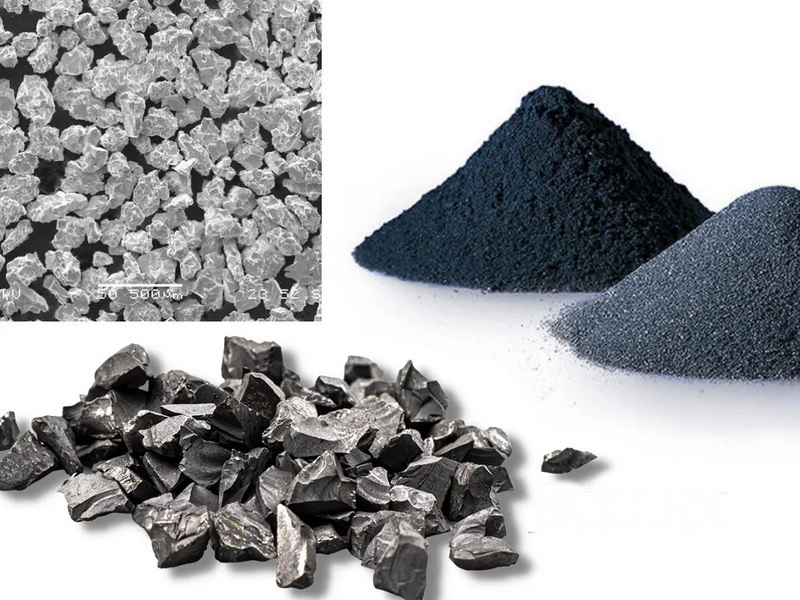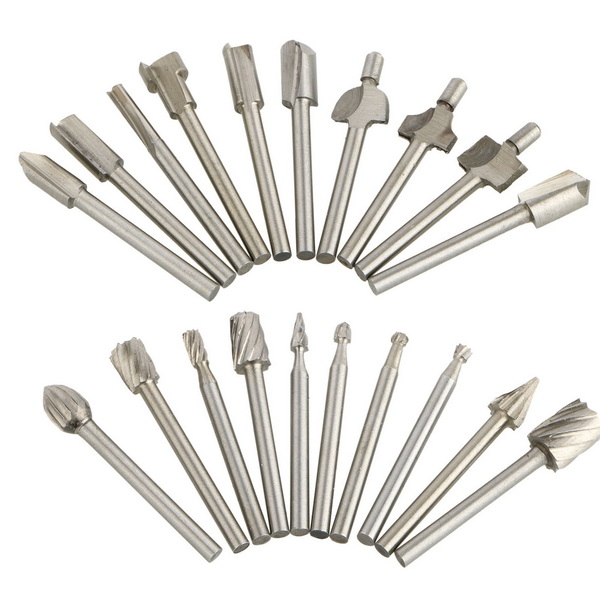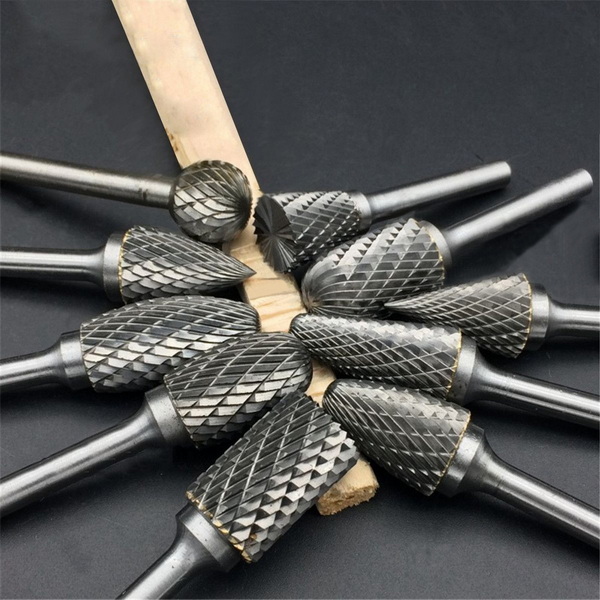Content Menu
● Introduction to Tungsten Carbide Nanoparticles
>> Properties of Tungsten Carbide Nanoparticles
>> Enhanced Properties at Nanoscale
● Applications of Tungsten Carbide Nanoparticles
>> 1. Cutting Tools and Mining Equipment
>> 2. Catalysis
>> 3. Coatings
>> 4. Nanocomposites
>> 5. Photocatalysis
>> 6. Biomedical Applications
>> 7. Electronics
● Synthesis Methods
>> Characterization Techniques
● Challenges and Future Directions
● Conclusion
● Frequently Asked Questions
>> 1. What are the primary applications of tungsten carbide nanoparticles?
>> 2. How are tungsten carbide nanoparticles synthesized?
>> 3. What are the catalytic properties of tungsten carbide nanoparticles?
>> 4. Can tungsten carbide nanoparticles be used in photocatalysis?
>> 5. What are the storage conditions for tungsten carbide nanoparticles?
● Citations:
Tungsten carbide nanoparticles have been gaining significant attention in recent years due to their unique properties and diverse applications. These nanoparticles are not entirely new, as tungsten carbide itself has been used in various industrial applications for decades. However, advancements in nanotechnology have enabled the production of tungsten carbide at the nanoscale, opening up new avenues for its use.

Introduction to Tungsten Carbide Nanoparticles
Tungsten carbide (WC) is a compound consisting of tungsten and carbon, known for its exceptional hardness, wear resistance, and corrosion resistance. At the nanoscale, these properties are further enhanced, making WC nanoparticles highly sought after in fields such as materials science, catalysis, and engineering.
Properties of Tungsten Carbide Nanoparticles
- Hardness and Wear Resistance: WC nanoparticles have a hardness of 9-9.5 on the Mohs scale, making them ideal for applications requiring high durability and resistance to abrasion. This property is particularly beneficial in industries such as mining and manufacturing where tools are subjected to extreme conditions.
- Catalytic Properties: They exhibit catalytic activities similar to those of platinum-based materials but are more cost-effective and resistant to CO deactivation. This makes them suitable for various chemical reactions, including hydrogenation and oxidation processes.
- Thermal Stability: WC nanoparticles have a high melting point of approximately 2870°C and a boiling point of 6000°C. This thermal stability allows them to perform effectively in high-temperature applications without degrading.
- Electrical Conductivity: Tungsten carbide nanoparticles also possess good electrical conductivity, making them suitable for electronic applications, including sensors and conductive coatings.
Enhanced Properties at Nanoscale
The reduction in size to the nanoscale significantly alters the physical and chemical properties of tungsten carbide. For instance:
- Increased Surface Area: The surface area-to-volume ratio increases dramatically at the nanoscale, enhancing reactivity and making these nanoparticles more effective as catalysts.
- Quantum Effects: At the nanoscale, quantum effects can influence the behavior of materials. For tungsten carbide nanoparticles, this can lead to unique optical properties that could be exploited in photonics and optoelectronics.
Applications of Tungsten Carbide Nanoparticles
1. Cutting Tools and Mining Equipment
WC nanoparticles are used to enhance the hardness and wear resistance of cutting tools and mining equipment, improving their lifespan and efficiency. These nanoparticles can be incorporated into tool coatings or used to create composite materials that withstand extreme conditions.
2. Catalysis
They serve as catalysts or catalyst supports in various chemical reactions, including petrochemical cracking and hydrogen evolution reactions. The ability of WC nanoparticles to facilitate these reactions efficiently makes them an attractive alternative to traditional catalysts.
3. Coatings
WC nanoparticles are incorporated into coatings to provide corrosion resistance, wear resistance, and erosion resistance. These coatings are essential in industries such as aerospace, automotive, and oil & gas where equipment is exposed to harsh environments.
4. Nanocomposites
They are used in nanocomposites to enhance mechanical properties such as hardness and strength. The addition of tungsten carbide nanoparticles can significantly improve the performance of polymers and metals used in construction materials.
5. Photocatalysis
Recent studies have explored the use of WC nanoparticles as photocatalysts for the degradation of organic pollutants under near-infrared light. This application is particularly promising for environmental remediation efforts aimed at cleaning up contaminated water sources.
6. Biomedical Applications
Emerging research indicates potential biomedical applications for tungsten carbide nanoparticles. Their biocompatibility combined with their mechanical strength makes them suitable candidates for use in dental implants or prosthetics.
7. Electronics
The electrical conductivity of tungsten carbide nanoparticles opens up opportunities for their use in electronic devices. They can be utilized in sensors or as conductive fillers in polymer matrices for electronic packaging.

Synthesis Methods
The synthesis of tungsten carbide nanoparticles can be achieved through various methods, including:
- High-Pressure and High-Temperature (HPHT) Treatment: This method involves pyrolyzing organotungsten compounds under high pressure and temperature to form WC nanoparticles embedded in graphitic carbon. The HPHT method is effective but requires specialized equipment due to the extreme conditions involved.
- Ion-Exchange Resin Method: This novel route uses an ion-exchange resin as a carbon source to synthesize nanoscale WC at lower temperatures, offering a cost-efficient approach. This method allows for better control over particle size and distribution.
- Sol-Gel Process: In this method, metal salts are mixed with a gel-forming agent followed by pyrolysis to produce tungsten carbide nanoparticles. This technique is advantageous due to its simplicity and ability to produce uniform particles.
- Mechanical Milling: Mechanical milling involves grinding bulk tungsten carbide into fine particles under controlled conditions. While this method is straightforward, it may lead to contamination from milling media.
Characterization Techniques
Once synthesized, it is crucial to characterize tungsten carbide nanoparticles to understand their properties fully:
- Transmission Electron Microscopy (TEM): TEM provides detailed images of nanoparticle morphology and size distribution.
- X-ray Diffraction (XRD): XRD is used to determine the crystalline structure of the synthesized tungsten carbide nanoparticles.
- Scanning Electron Microscopy (SEM): SEM helps visualize surface morphology and particle aggregation.
- Dynamic Light Scattering (DLS): DLS measures particle size distribution in colloidal suspensions.
Challenges and Future Directions
Despite the advancements in tungsten carbide nanoparticles, challenges remain:
1. Production Scale-Up: Scaling up production while maintaining purity and uniformity is a significant hurdle that researchers face.
2. Environmental Impact: The environmental impact of synthesizing tungsten carbide needs careful consideration due to potential toxicity concerns associated with nanomaterials.
3. Market Acceptance: For new applications like biomedical uses or photocatalysis to gain traction, market acceptance must be established through rigorous testing.
Future research should focus on developing more efficient synthesis methods while exploring new applications, particularly in renewable energy (like hydrogen storage) and environmental remediation (such as wastewater treatment).
Conclusion
Tungsten carbide nanoparticles represent a fascinating area of research with immense potential across various industries due to their unique properties at the nanoscale. While they are not entirely new in terms of material composition, their application at this scale has opened up exciting possibilities that could revolutionize multiple fields from manufacturing tools to environmental cleanup technologies. As research progresses, we can expect further innovations that leverage these remarkable materials' properties.

Frequently Asked Questions
1. What are the primary applications of tungsten carbide nanoparticles?
Tungsten carbide nanoparticles are primarily used in cutting tools, mining equipment, catalysis, coatings, nanocomposites, photocatalysis, biomedical applications, and electronics due to their hardness and wear resistance.
2. How are tungsten carbide nanoparticles synthesized?
WC nanoparticles can be synthesized using methods such as high-pressure high-temperature treatment of organotungsten compounds or ion-exchange resin methods along with sol-gel processes or mechanical milling techniques.
3. What are the catalytic properties of tungsten carbide nanoparticles?
WC nanoparticles exhibit catalytic activities similar to platinum but are more cost-effective and resistant to CO deactivation; they are suitable for reactions like hydrogen evolution and petrochemical cracking.
4. Can tungsten carbide nanoparticles be used in photocatalysis?
Yes, recent studies have shown that WC nanoparticles can be used as photocatalysts for degrading organic pollutants under near-infrared light.
5. What are the storage conditions for tungsten carbide nanoparticles?
WC nanoparticles should be stored in a vacuum-sealed container in a cool, dry place to prevent exposure to air and stress.
Citations:
[1] https://shop.nanografi.com/nanoparticles/tungsten-carbide-wc-nanopowder-nanoparticles-purity-99-99-size-55-nm/
[2] https://www.mdpi.com/1420-3049/27/15/4751
[3] https://www.us-nano.com/inc/sdetail/202
[4] https://www.mdpi.com/2079-4991/15/3/170
[5] https://www.indiamart.com/proddetail/tungsten-carbide-nanoparticles-20795115173.html
[6] https://nanografi.com/nanoparticles/tungsten-carbide-wc-nanopowder-nanoparticles-purity-99-99-size-55-nm/
[7] https://nanografi.com/nanoparticles/compounds-nanoparticles/tungsten-carbide-wc-nanoparticles/
[8] https://www.nature.com/articles/srep01646
[9] https://www.americanelements.com/tungsten-carbide-nanoparticles-12070-12-1
[10] https://pubs.rsc.org/en/content/articlelanding/2019/ta/c9ta03151k
[11] https://www.nanoshel.com/product/tungsten-carbide-nanoparticles
[12] https://advanced.onlinelibrary.wiley.com/doi/full/10.1002/aesr.202500016
[13] https://www.spandidos-publications.com/10.3892/ijo.2013.1828/abstract
[14] https://pubs.acs.org/doi/abs/10.1021/acsanm.3c05497
[15] https://www.sigmaaldrich.com/US/en/product/aldrich/778346
[16] https://www.indiamart.com/proddetail/tungsten-carbide-nanoparticles-18483444691.html
[17] https://abmnano.com/product/tungsten-carbide-nano-powder/
















